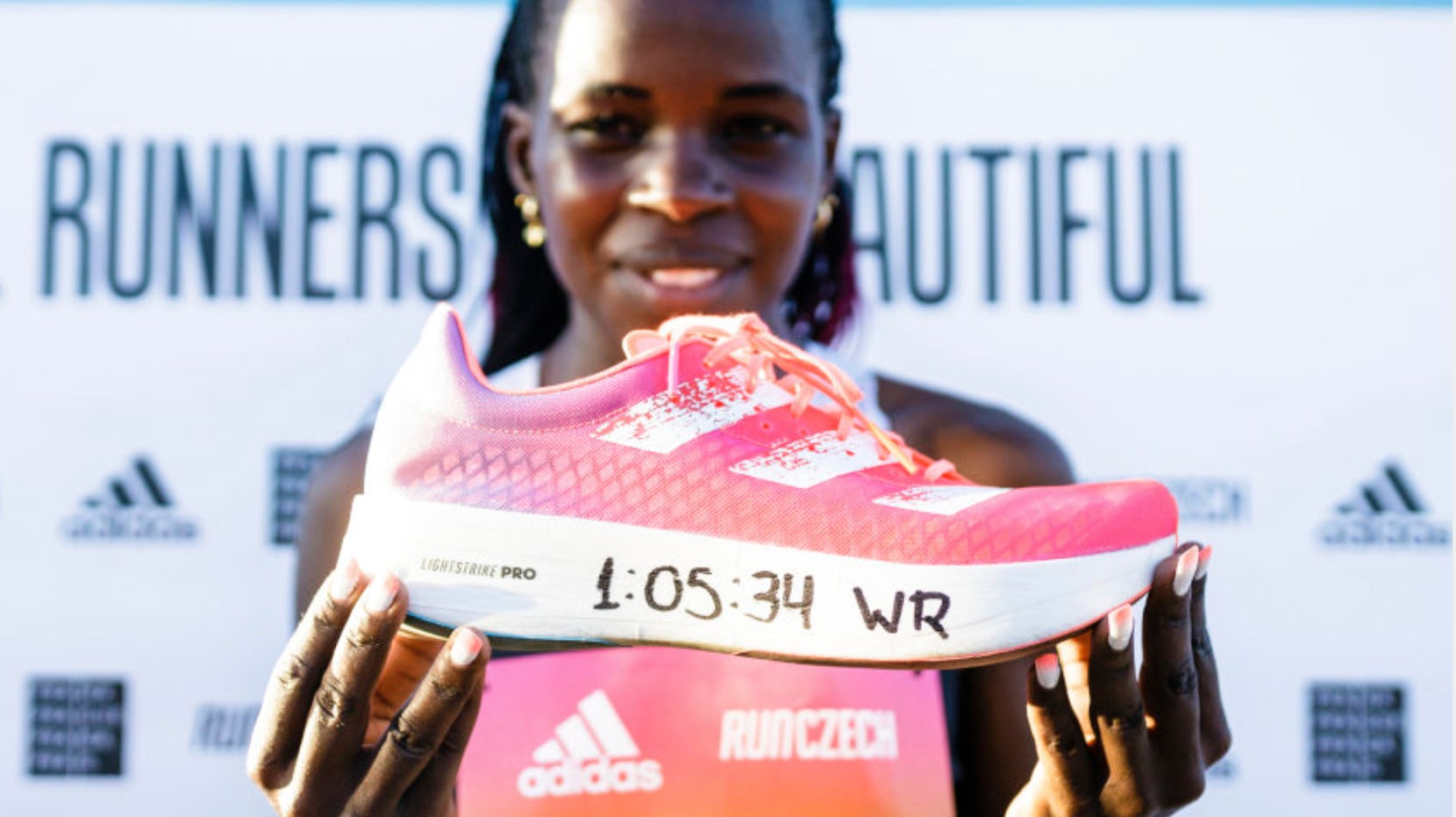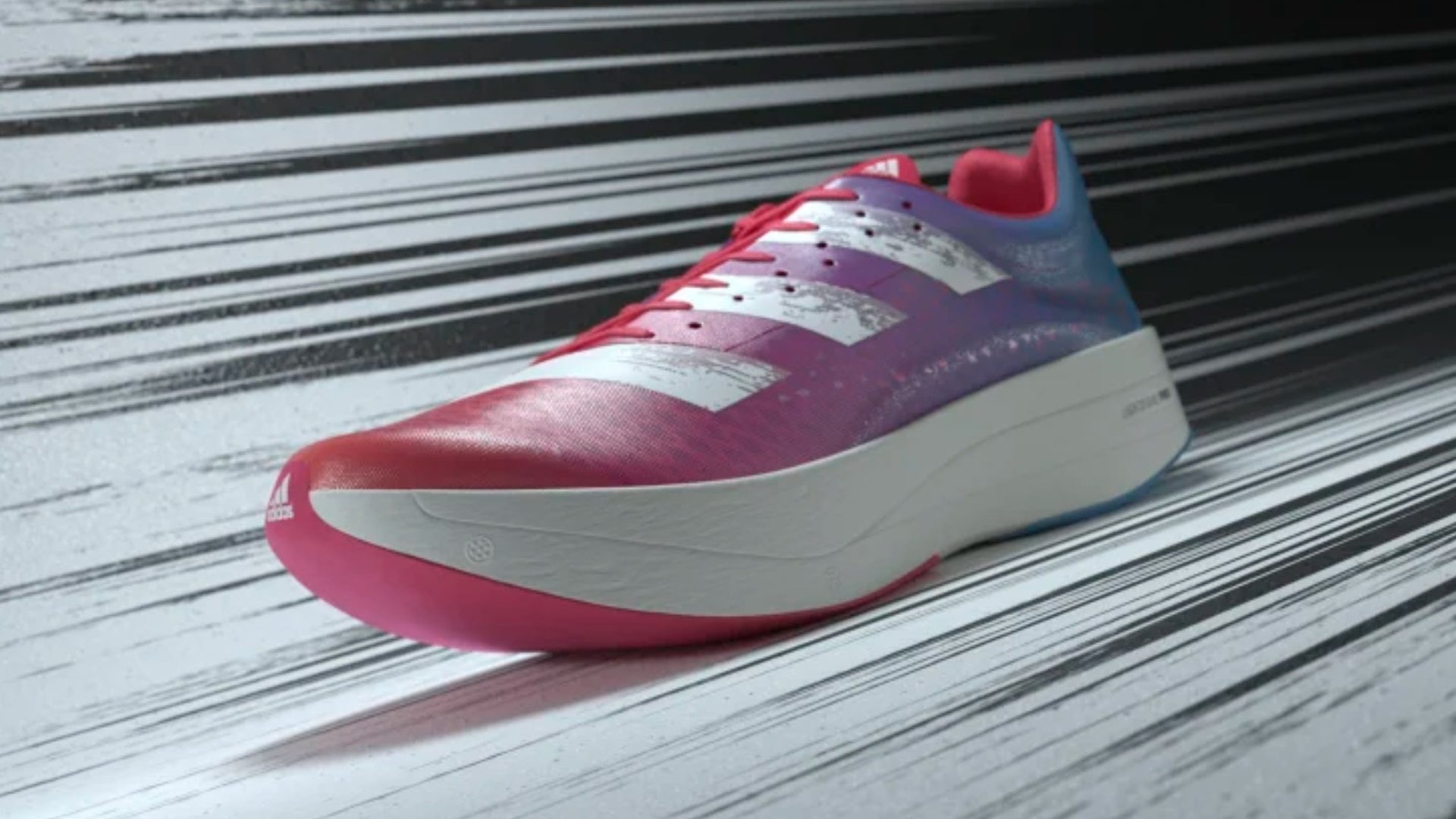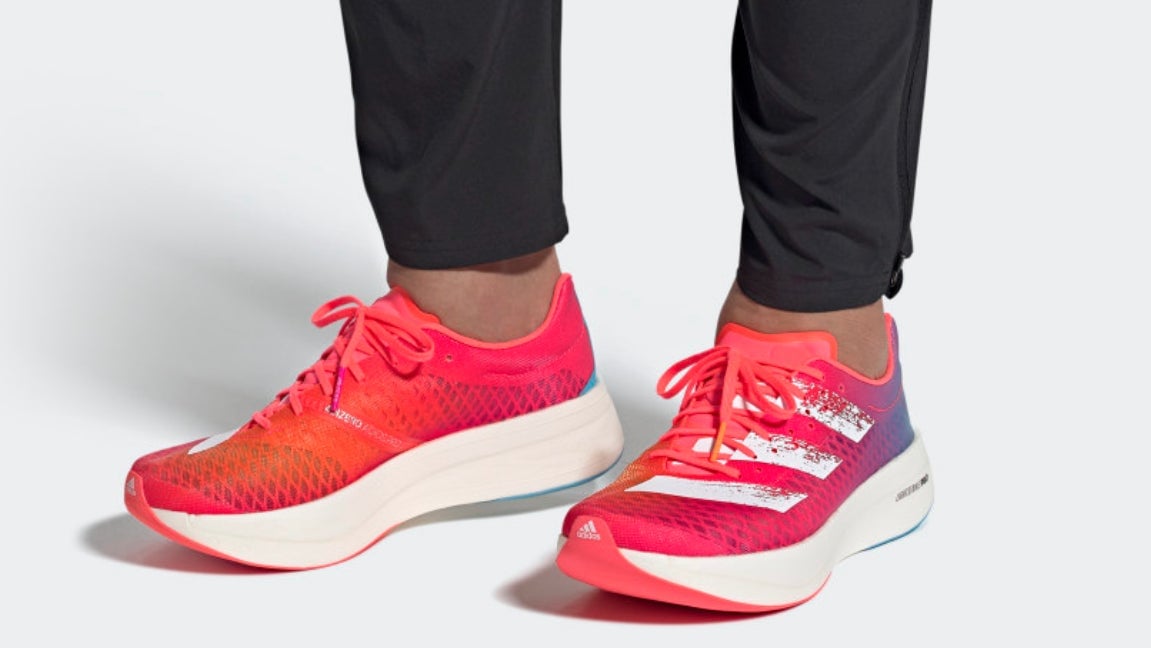Does Adidas’s Foray Into Carbon-Plate Running Shoes Live up To the Hype?
Adizero Adios Pro | $200 | Adidas

Adizero Adios Pro | $200 | Adidas
Suggested Reading
When Nike debuted their marathon-crushing Alphafly Next% last year, it marked the beginning of a new era in running tech. The shoe, which, in addition to ultra-lightweight materials, featured a highly controversial carbon plate, made the best kind of waves (which isn’t to say that they were all positive but hey, there’s no such thing as bad press). It soon became clear that any and all protests against the legitimacy of the shoe in the competitive world were only going to last as long as it took Nike’s peers in the sports innovation world to catch up. Well, they’ve caught up.
Related Content
Adidas’s foray into the carbon-plate running sneaker world comes in the form of the Adizero Adios Pro, a running shoe that not only lives up to the high bar set by the Alphafly but even improves on it in one crucial area. It sold out almost immediately in its first limited drop and that colorway is now largely only available via resale sites like StockX. A more recent colorway was given a members-only drop on Adidas and while select sizes are still available, they’re going fast.

Let’s get down to the carbon plate of it all: the Adizero Adios Pro features a springy carbon plate in its heel, which as you can guess provides a significant boost to your step when you’re hitting the pavement. The energy return is pretty incredible, though that has just as much to do with what’s going on in the forefoot. Rather than one piece of carbon plating that runs from the toe of the shoe to the heel, the shoes have the plate situated firmly in the heel and a series of five carbon rods running through the forefoot. These rods are biometrically engineered to match the construct of our feet, with one rod for each toe.
We’ll get what could be perceived as the bad part out of the way: this makes for a sole that feels crazy stiff in hand. It’s so rigid it’s honestly hard to imagine taking it out for a short run, nevermind the endurance kind the shoe is ostensibly meant for. That said, once the shoe is on your foot, it’s not a problem at all. A springy, high-energy bounce brings the most out of every stride.

A lot of this comes down to the other secret weapon of the sneaker: the shoe’s Lightstrike foam sole. Boost material may be the brand’s signature but Lightstrike has really made waves as of late (its inclusion in the brand’s Dame 6 basketball sneaker made for a can’t-miss hoops shoe). It’s incredibly light and stable, giving explosive energy return on its own and keeping your foot cushioned, level, and safe above all else (incredible subtle grooving on the sole of the shoe for the sake of traction helps a ton as well). When it works in tandem with the carbon rods and plating, it makes for a shoe that will seriously have you feel like you’re flying.
Perhaps most importantly, the sole is made up of a single unit. One of the biggest downsides to the Alphafly Next% is the separated construction of the sole—the Air Zoom pods are in the forefoot while the foam in the heel is a separate unit. It makes for a shoe that doesn’t necessarily feel as stable as you might need it to on uneven surfaces, best served on roads and tracks. By nature, no carbon plate running shoe is going to be great for like, a full-on trail run, but the Lightstrike sole unit makes for a stabler stride (though in the interest of full disclosure, I’ve personally found the Alphafly to have a bit more spring to it).
If you have any interest in the shoe at all, it’s likely driven by what’s going on in the sole, but the upper has plenty to offer as well. It’s comprised of a super breathable Celermesh material that feels practically weightless. There’s also a really cool touch on the outer side of each shoe: ten different lace holes in different positions up and down the shoe, making for an ultra-customizable fit.
Restrictions be damned, the (proverbial and literal) carbon plate sneaker race has begun. Nike struck first, and like any real race, this game does, in fact, often come down to who gets there first. But Adidas’s foray into the field is a formidable one, not to be missed by anyone looking to shed a few seconds (or more!) off their next run, or by anyone who makes an effort to keep up with the latest and greatest in running innovation.
